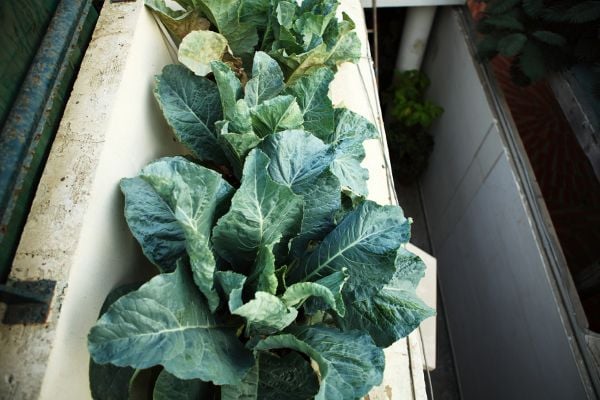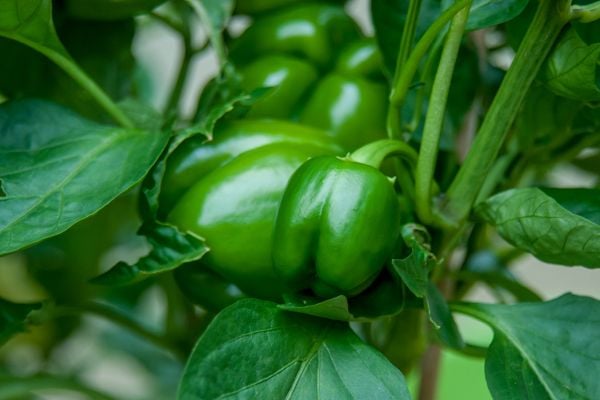Container Gardening Ideas For Vegetables
Do you live in a place that prevents you from planting a traditional garden? Well, if you have a desire to plant some yummy vegetables but don't have a large space, then consider planting in a container. You might be surprised by how much you can grow in containers that fit on a patio, deck, porch, or balcony, making it easy to grow vegetables even if you live in an apartment. Before you get started, there are a few tips you should know that will help you determine what kind of veggies you want to include in your garden and how to grow them.
Containers
Check out planters on Amazon.
Make sure you are selecting the right size of containers, with the rule of thumb being bigger is better. Containers come in all kinds of varieties, such as large flowerpots, half barrels, plastic-lined bushel baskets, window boxes, planters, and buckets. Selecting the right container will also be determined by what you grow, as some plants require a deeper pot. Watering is another issue, so make sure the container you pick has plenty of holes in the bottom for excess water to drain. With that in mind, they do make self-watering containers that have a deep reservoir beneath the soil, allowing the roots to reach down for water. If you don't want to spend a lot of time watering, then consider this option.
Soil

Plants really don't care so much about the kind of pot you place them in, but they do care a whole lot about the soil you use. With container gardening, it's best to use soil specifically designed for planting in containers. You can find these types of mixes at your local nursery. How much soil do you need? In general, you should put 3 pints of soil in a six-inch pot, 3.5 gallons per 12-inch pot, and 6.5 gallons for a 20 inch pot. If you're adventurous, you can always save a few bucks by making your own mix with equal parts peat moss; potting soil; and Vermiculite, Perlite, or clean sand.
Planting
You should start your vegetable container garden at the same time you would plant a normal garden. If you're starting in early spring, go ahead and plant seeds in the containers, though some plants are easier to grow from transplants. If you're getting a late start to things, then buy some transplants from a local nursery and plant them at the same depth as they were in the transplant container. Make sure you soak the soil completely before planting and allow any excess water to drain. Follow the package directions for seedlings and plant more than you'll need, as not all seeds will germinate, and you can thin them out later. After you've planted, gently water to prevent the soil from drying out.
Watering

Watering, along with sunlight, is the most important thing for your plant's health. Inspect the soil in your containers frequently to make sure the mix hasn't dried out. If the soil is too dry, then give it a good watering. Keep in mind that while your plants require water to grow, you also need to make sure excess water has a way to drain. To improve the health of your plants, you can feed them about once a week with a water-soluble fertilizer.
Types of Container Vegetables
Broccoli

Broccoli is a great vegetable for containers as it is easy to grow and renders a bountiful harvest. Small Miracle, Green Comet, and DeCicco are all great varieties to choose from. Broccoli should be kept to one transplant per five-gallon container and is easier to grow from a transplant than from seeds.
Carrots

Carrots are another hardy vegetable that tends to do well in containers. You should plant carrot seeds about three inches apart, and make sure the container is at least 2 gallons deep. Varieties include Little Finger, Danver's Half Long, Short 'n' Sweet, and Thumbelina.
Tomatoes

Tomatoes are a great staple for many gardens, but they do take some work. For containers, make sure you look for dwarf varieties that will only grow to a certain size and bear their fruit in a matter of weeks. Keep in mind that it's easier to use transplants instead of seeds with tomatoes. Further, tomatoes tend to sprawl out and get heavy, so think about installing a good lattice to support them off the soil. Additionally, you should only plant one tomato plant per five-gallon container.
Greens

Baby spinach and lettuce are great vegetables for container gardens. They start in the spring and can tolerate cool temperatures. You can sow seeds right in the pot, and they should take about a week to sprout. To prolong your harvest, clip the largest leaves as they grow since this will promote more growth. After a quick harvest, you can clear out the pot and start again.
Peppers

Lastly, peppers are ideal for containers because they are easy to manage and don't require much besides water and plenty of sunlight to grow. Additionally, you can plant up to two transplants per five gallon container, giving you more bang for your pot. Varieties of peppers are endless, but a few you should consider are Gypsy, New Ace, and Long Red Cayenne.
When you purchase through links on our site, we may earn commissions at no cost to you.
Container Gardening Ideas For Vegetables
Source: https://www.doityourself.com/stry/vegetable-container-gardening-for-the-urbanite
Posted by: vallierekeisheiled.blogspot.com

0 Response to "Container Gardening Ideas For Vegetables"
Post a Comment